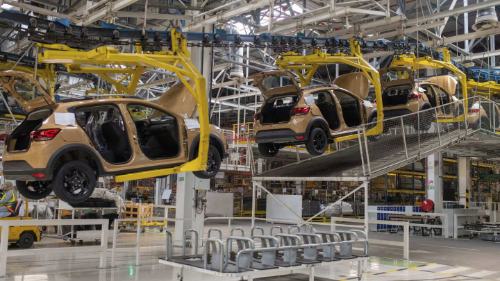Morocco’s EV Ambitions Boosted by Stellantis' $1.4B Kenitra Investment

TLDR
- Stellantis has begun a $1.4 billion expansion of its Kenitra industrial complex in Morocco to triple engine assembly capacity
- The upgrade, which started mid-July 2025, will raise engine output from 100,000 to 350,000 units annually by 2030
- Morocco is targeting annual EV production of 100,000 units, with domestic EV sales up 52% in 2024
Stellantis has begun a $1.4 billion expansion of its Kenitra industrial complex in Morocco, aiming to triple engine assembly capacity and more than triple micromobility EV production.
The upgrade, which started mid-July 2025, will raise engine output from 100,000 to 350,000 units annually by 2030, and increase EV output from 20,000 to 70,000 units. The Moroccan government has supported the project with tax breaks, free land use, and training incentives.
Kenitra’s expansion reinforces Morocco’s position as Africa’s top passenger car producer and second-largest commercial vehicle manufacturer, with plans to grow total vehicle output from 700,000 in 2024 to 1 million in 2025.
While South Africa remains Africa’s largest automotive hub, its industry faces challenges from rising Chinese imports, new US tariffs on vehicle exports, and slow EV adoption. EV production there doubled in 2024 to 15,611 units, but the EU and UK’s 2035 combustion engine bans threaten 75% of its export market without faster electrification.
Morocco is targeting annual EV production of 100,000 units, with domestic EV sales up 52% in 2024 and charging infrastructure set to grow from 1,000 to 3,500 stations by 2026. Analysts note that Morocco’s progressive industrial policy could shift the continental balance in the coming years.
Daba's newsletter is now on Substack. Sign up here to get the best of Africa's investment landscape
Key Takeaways
South Africa’s automotive exports are more Africa-focused, with 17.9% of production shipped within the continent, often as semi-knocked-down kits assembled in partner countries. Morocco’s exports are more EU-oriented, earning 3 billion dirhams (€280 million) from European sales in 2024. Both countries see opportunities in the African Continental Free Trade Area (AfCFTA), but stress the need for strict rules of origin to prevent investment erosion and safeguard jobs. Properly implemented, AfCFTA could open new regional markets for both Morocco’s expanding EV capacity and South Africa’s established manufacturing base.

Next Frontier
Stay up to date on major news and events in African markets. Delivered weekly.
Pulse54
UDeep-dives into what’s old and new in Africa’s investment landscape. Delivered twice monthly.
Events
Sign up to stay informed about our regular webinars, product launches, and exhibitions.




